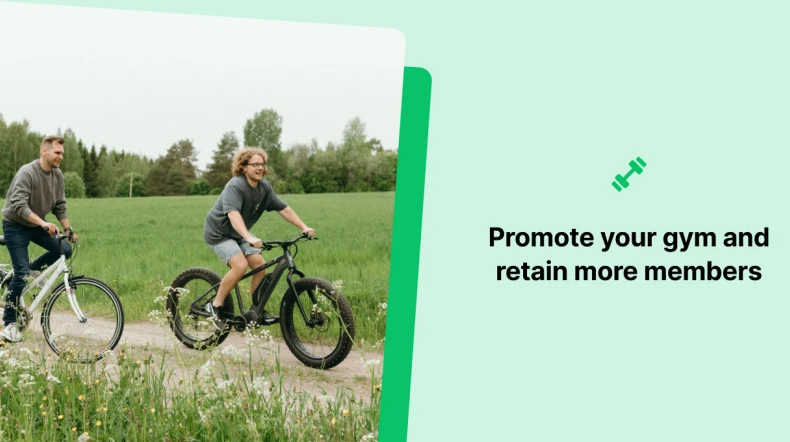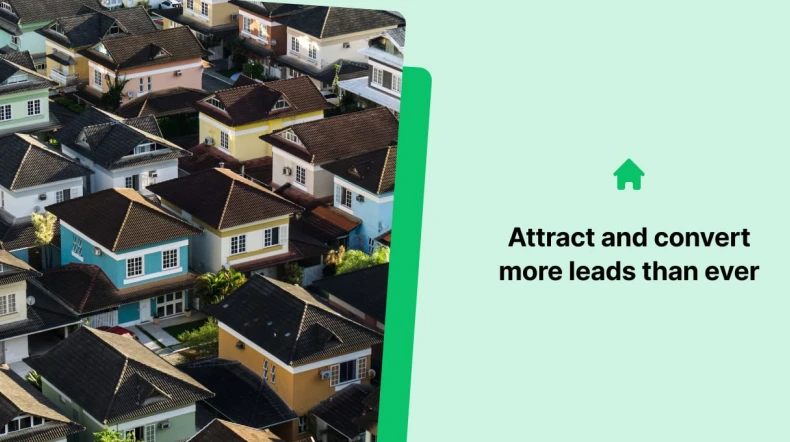An actionable guide to retail email marketing
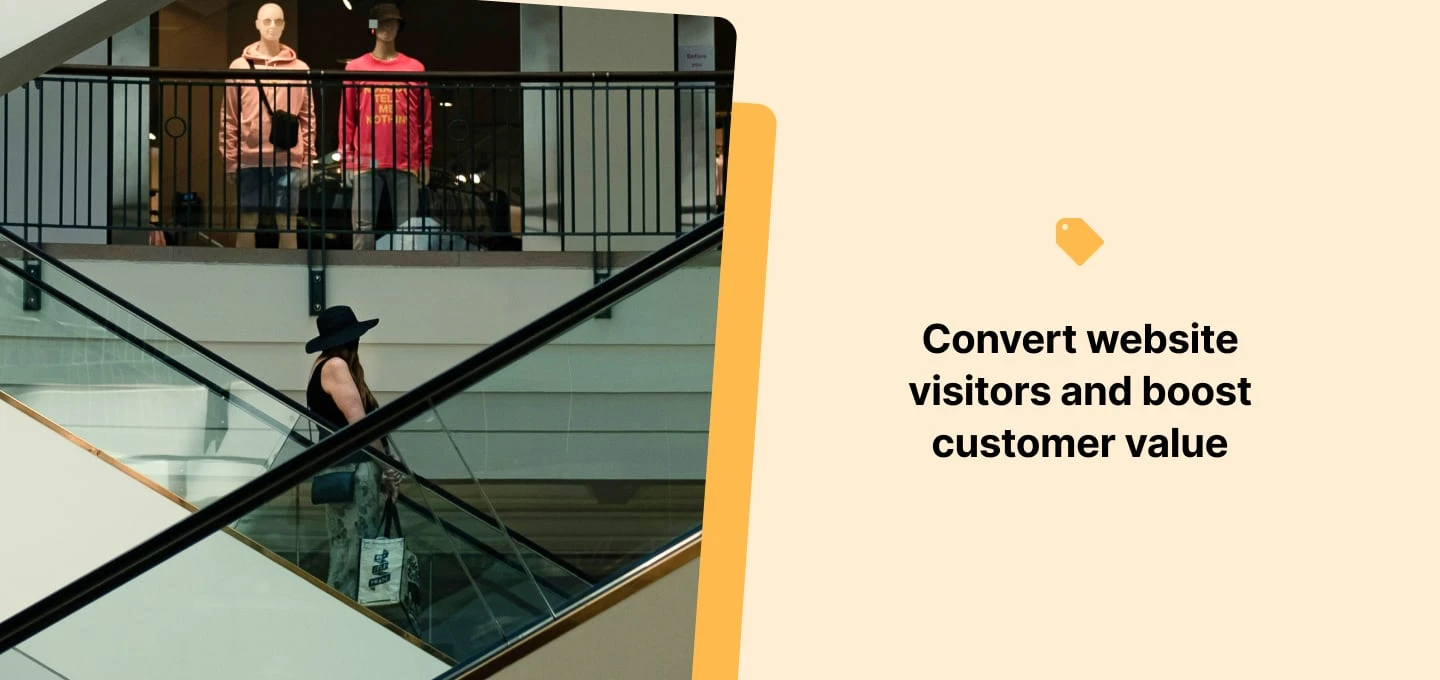
Do you run a retail shop? An online store? Or both? Regardless of where you do business, a solid retail email marketing strategy can generate new customers and encourage existing ones to buy more.
The building blocks of an effective retail email strategy are easy to set up. Get these 4 elements right, and you're on your way to attracting more loyal customers.
Collecting email addresses: Gaining more email addresses means more potential customers
Sending newsletters: Stay top-of-mind with campaigns sent at regular intervals, typically weekly, biweekly, or monthly
Automating customer touchpoints: Create workflows that increase sales at key points such as cart abandonment and newsletter signup
Segmenting for better targeting: Segment subscribers by interests or behaviors to send targeted messages more likely to boost sales
This guide will show you how to set up each of these parts for your retail business. Plus we’ll end with a few extra steps you can take to optimize your digital marketing such as personalization, A/B testing and improving deliverability.
Retail email marketing is the process of using email to drive sales at your business. You'll use the communication channel to build relationships with customers and potential buyers and then generate sales by promoting your products and offers.
Retail email marketing has much in common with e-commerce email marketing. But the former also includes ways that businesses with a physical presence can power their sales.
Essential tactics for a successful retail email marketing strategy
Let's get into more detail about each of the 4 key parts of a retail email strategy. After reading the guide, you'll be able to start implementing them to grow sales and build your business.
Step 1: Build a retail email list
Gathering more email addresses of people who are interested in your business is the most important ongoing tactic that you need to build an audience, promote your store and drive sales. Collecting email addresses on purchases, and using forms and pop-ups to convert website visitors are easy-to-implement strategies. Here's more about each one.
1. Collect email addresses upon purchase
People provide an email address when they buy from your website. Build your list by requesting permission to send updates and marketing emails to these contacts.
Angel Aromatics does this via a box customers can check during the checkout process to receive news and offers.
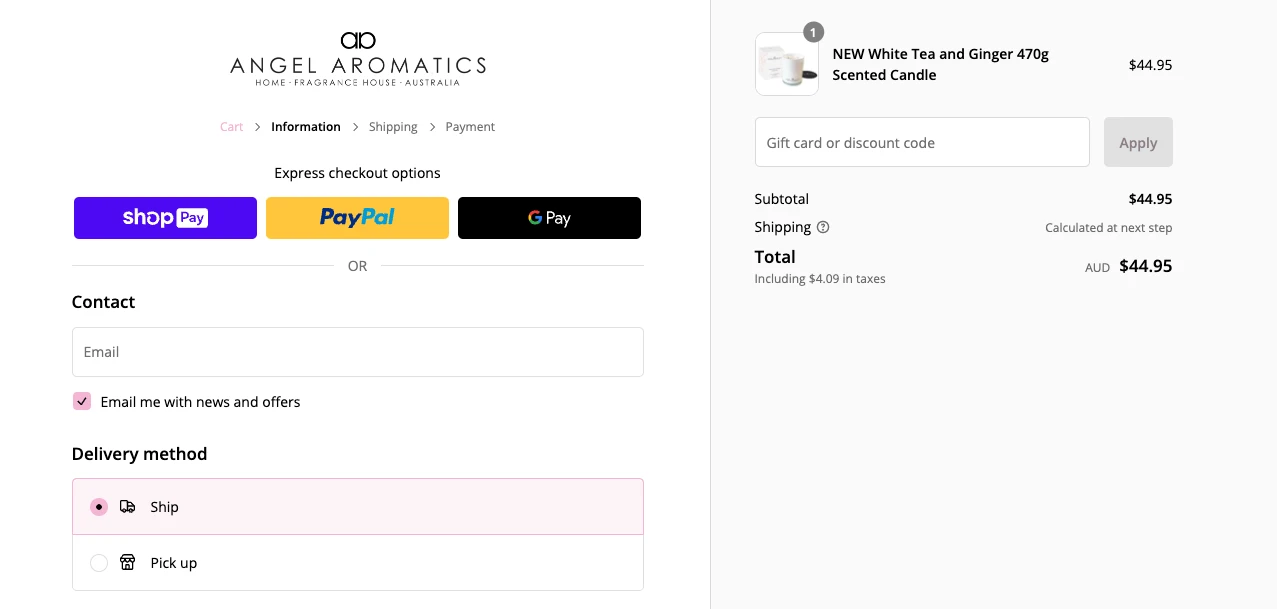
You can do a similar thing for offline customers. When people buy in your store, ask them to hand over their email addresses. Collect contact details manually and upload them to your list, or use the MailerLite iPad app to sync addresses automatically.
Most e-commerce platforms make it easy for brands to collect marketing permission during the sign-up process. When you sync your contact list with MailerLite using one of our e-commerce integrations, you’ll get the options to either import all contacts or just those who have given marketing permission.
2. Convert website visitors with a coupon
To convert website visitors into subscribers, you need to offer an incentive to join your list.
First-purchase discount coupons are super effective. Early access to new products, freebies, digital guides, or community access can also work, but coupons have the double benefit of encouraging people to both join your list and buy from you.
Promote your offer with forms and pop-ups
Use pop-ups and forms to get the offer in front of as many website visitors as possible. I Want Fabric uses a MailerLite floating bar pop-up on its homepage to promote its coupon offer, as well as a signup form on its product pages.
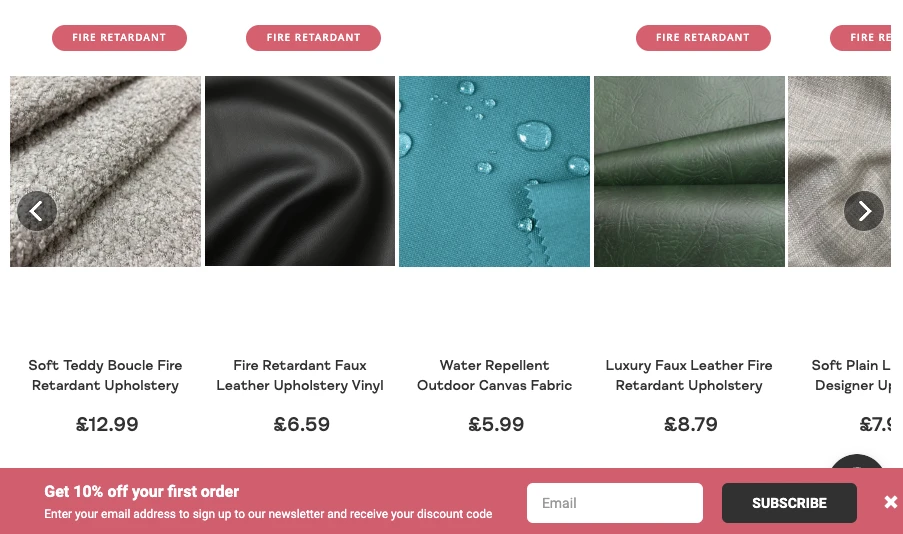
Step 2: Send campaigns and newsletters
Start sending newsletter campaigns as soon as you have some email addresses. Send them weekly, biweekly, or monthly to keep people updated about your store and encourage them to buy.
These types of emails can include your latest products, offers, store information, and anything else that helps build the relationship with your customer base. RedCapCards uses its newsletter to promote its latest products and best sellers.
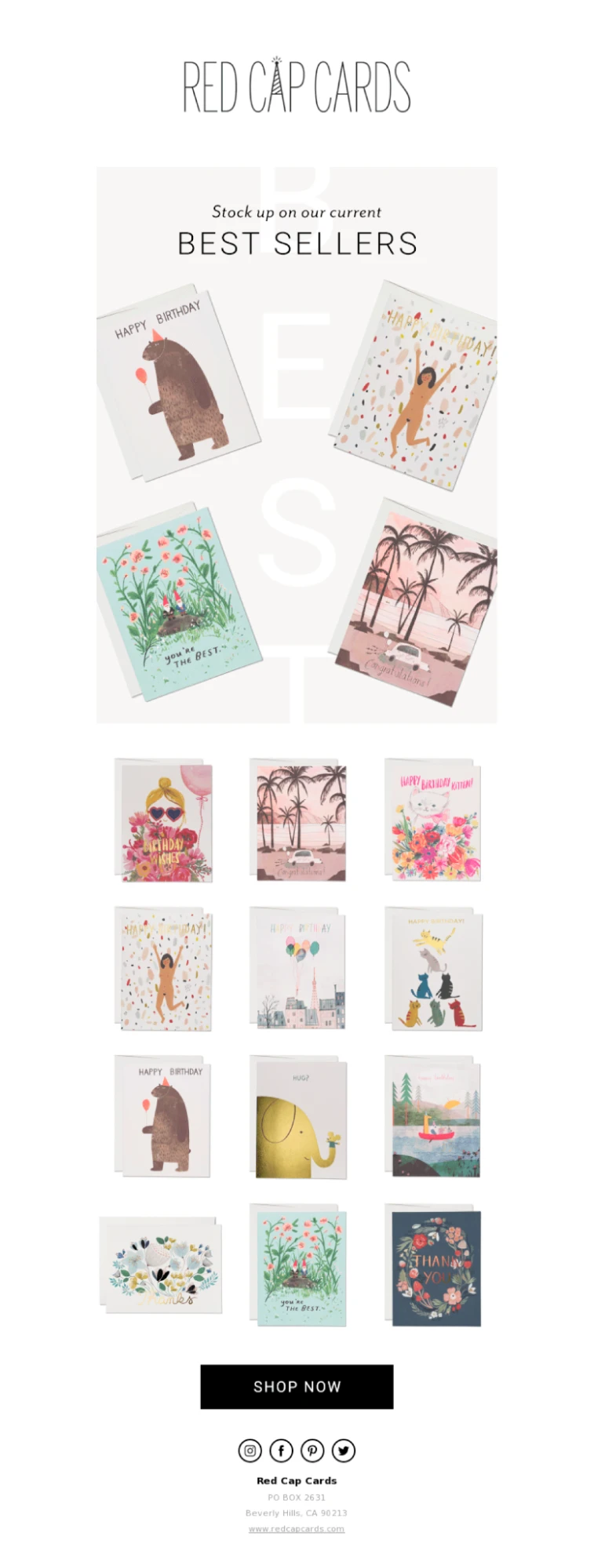
You can also use campaigns to send one-off emails promoting events, discounts, or product releases. Sports retailer Unisportsstore sent a one-off campaign promoting a competition that subscribers can enter to win tickets to the Champions League final.

4 valuable tips to improve your campaigns
New to retail email marketing and not sure where to start? Then follow these fundamental rules for email campaigns that convert.
📅 Plan your campaigns in advance
Use an email marketing content calendar to plan your campaigns and create timely, well-thought-out messages that resonate with your target audience.
📧 Create engaging subject lines and preheaders
Your subject line is your opportunity to encourage people to open your emails. Follow the subject line best practices and tips in this article to send your open rates soaring.
✍️ Nail your written content
Anyone can write an email, but writing one that engages your audience and compels them to buy takes skill and practice. Follow the tips in this article to learn how to craft email content.
🎨 Design visually appealing emails
Design emails that look attractive, showcase your products in their best light, and fit in with the branding of your other marketing assets. Click here for a complete guide to email design.
📱 Optimize email campaigns for mobile devices
Test your campaign on mobile and desktop devices. Campaigns built in MailerLite are automatically optimized for all screen sizes.
Step 3: Set up automation
Automated emails are triggered emails that fire off whenever a subscriber takes a particular action. Set them up once and they’ll continue to work without your input.
Retailers can choose from 10 automation triggers that enable almost any kind of workflow. You can even create workflows with multiple steps that change based on how people interact with the previous emails.
Start with the 3 essential automations every retail business needs.
Welcome email
Send an automated welcome email as soon as someone joins your email list. Include the discount code if you promised one on the sign-up form. Add collection links or product recommendations so the recipient can start shopping right away.
Mr Porter’s welcome email includes the discount code used to incentivize signups, further information about why to shop at the store and a link to the site’s latest product arrivals.
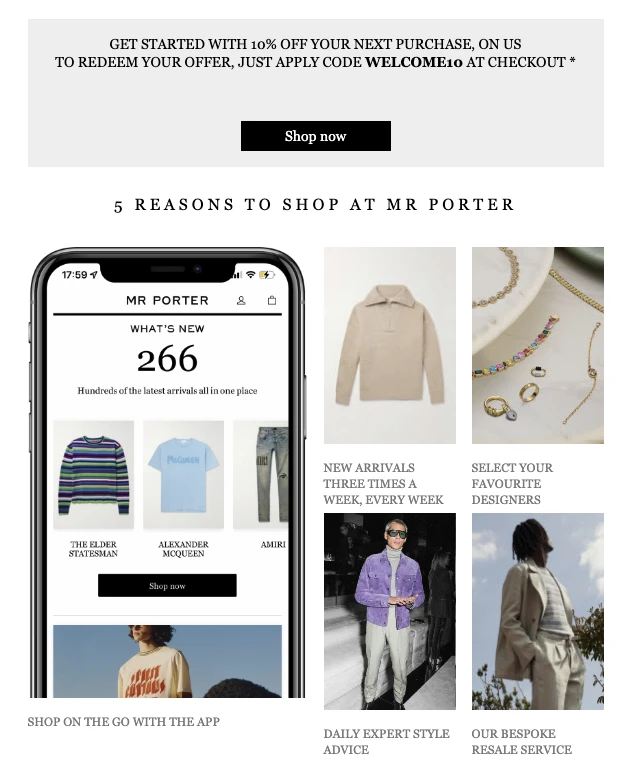
Abandoned cart email
Cart abandonment emails go out to email subscribers who start the checkout process but don’t finish it. They remind subscribers to complete their purchases by providing a link back to the shopping cart.
These emails are super effective: a study by Omnisend found they have a 2.37% conversion rate, making them the second-highest converting email type after welcome emails.
Fabletics sends a simple abandoned cart email that includes a product box with an image and link as well as a special offer to push the recipient to buy.
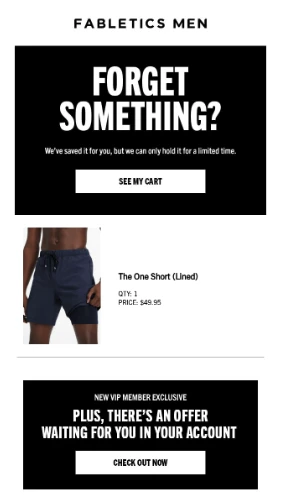
Post-purchase follow-up
Post-purchase follow-up emails go out in the days after someone buys from your store. These aren’t transactional emails like purchase or shipping emails, rather they are promotional emails designed to build relationships with customers.
These emails can include anything from upsells related to the customer’s purchase to discounts for repeat buys, invitations to connect on social media, further information about using the product, or referral links.
Once you’ve set up the basics, there are plenty of other automations you can try. Here are some options:
Birthday email: Ask customers for their birthdays and automatically deliver discounts on their special day
Re-engagement: Over time, people may stop opening or clicking on your emails. Send a re-engagement campaign to re-ignite their interest in your brand
Survey: Send a customer satisfaction survey to buyers a few days or weeks after they receive their product
Fills out a form: Create an automation based on when people fill out a form on your website. For example, you could create a form people can complete to be updated about an upcoming product launch, and then send an email confirmation when they do
Repurchase reminder: Send an automated email after a predefined amount of time has passed reminding customers to buy again. This is useful for products people buy multiple times, like food and drink or cosmetics
Ultimately, you can create automation for almost any part of the customer journey based on a ton of automation triggers. Read this article to find out more about how to set up automation.
Step 4: Segment your audience
Segmentation is when you split your email list up so you can send each segment more relevant emails. You’ll increase engagement which can lead to more sales.
Creating and adding people to segments is easy with MailerLite. Just define the criteria that someone has to meet to be added to a segment, and the contact will be added when they meet these criteria.
Here are some examples of the types of segments you can create:
New subscribers: Create a segment for potential customers who have recently joined your list
Interests: Create segments based on the category of the product they bought
Interaction: Create segments based on how engaged people are with your email campaigns
Customer value: Create segments for loyal customers who spend over a particular amount at your store
Location: Create segments based on the location of people who use your brand
Use your segments to create and send emails targeted at a particular audience's needs. For example, you could create segments based on the type of product people are interested in, and then send emails with relevant updates.
Below is an example of a sportswear retailer. You could create these segments when someone buys from a particular product category or by using triggers that update a custom field in the customer’s profile when they click on a particular link or answer a survey question.
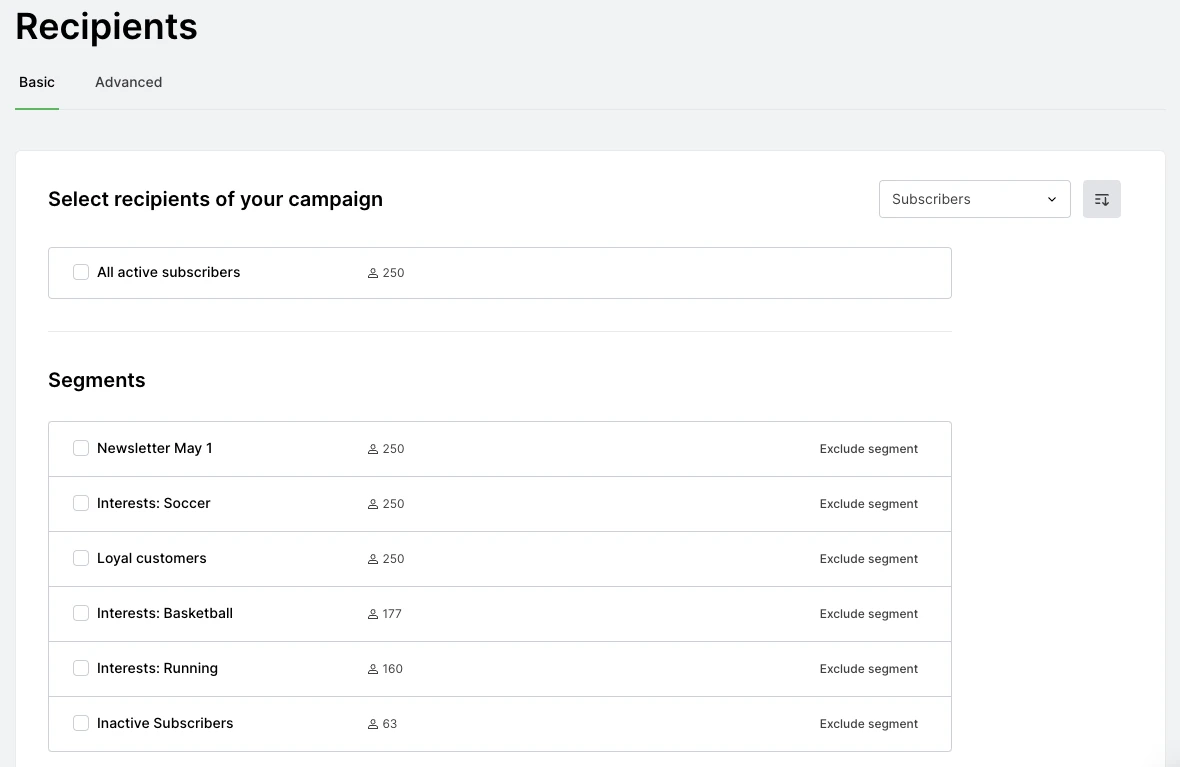
Dynamic content
You don’t always need to create a completely new email. Instead, you can add content to your main emails that will only be shown to people from your chosen segment.
For example, you could include multiple product boxes in your email that show up depending on the interests of the person who opens the email.

Or you could add coupons that appeal to the needs of each customer group, whether that’s a discount on a first purchase, repeat purchase, or a particular category of item.
Read this article to find out more about how to add dynamic content to your emails and the best strategies for doing so.
More retail email marketing tips for advanced campaigns
The above 4 points are the essentials that all retailers should think about when creating an effective email marketing strategy. But there are plenty of other things you can do to fine-tune and optimize your campaigns.
Create personalized emails
Email personalization is when you use information about a subscriber in your email content. You could use their name in the email greeting or subject line, or include information about recent purchases.
Reporting
Your MailerLite dashboard contains email marketing metrics you can use to assess the effectiveness of your email marketing efforts and take steps to improve.
Interaction metrics: Open and click metrics tell you whether people are interacting with the content you send. Dig deeper to see the exact elements that generate clicks
E-commerce earnings: See the revenue and number of orders brought in by all your email marketing efforts
Unsubscribe rate: Many people leaving your list suggests you aren’t providing relevant content that meets their needs
Deliverability metrics: Bounce rate shows the number of emails you sent that weren’t delivered to the recipient's inbox. Keep this number as low as possible
Check out our latest email marketing benchmarks article to see how your email campaigns stack up against other retail or online stores.
A/B testing
Email A/B testing is when you create 2 or more versions of a single email, form, landing page, call to action (CTA) or workflow and then show different parts of your audience each version.
You can see how the version performs based on metrics like opens, click-through rates, or conversions and then send the most impactful one to your entire list.
Keep your list clean
It’s inevitable that as you grow your list, some people will lose interest in your emails. You also may start to see spam email addresses join your list.
Sending emails to spam accounts or people who don’t interact with your content can cause deliverability issues over time. The good news is there are several steps you can take to stop this from happening.
Use double opt-in: Stop spam addresses from infiltrating your list by requiring people to confirm their subscription by clicking on a link
Use a re-engagement campaign: Send content targeted at people who haven’t opened or clicked on your email addresses in a predefined period
Remove inactive email addresses: Boost your open rate by removing people who don’t respond to your campaigns from your list
Clean your list: Consider using an email verification tool like MailerCheck to identify and remove low-quality email addresses from your email list
Implement real-time checks: Add real-time authentication to your sign-up forms so people can only sign up for your list with real email addresses
Check out this guide for more on increasing your email deliverability.
Promote your store today by following these steps
These are the 4 main parts of any retail email marketing strategy, plus a few extras. Follow the tips to put in place an effective email marketing strategy for your retail brand.
The easiest way to start is to sign up for MailerLite and then connect to your e-commerce store. We have integrations for all major e-commerce platforms including Shopify, WooCommerce, Prestashop, and BigCommerce. These are easy for anyone to set up and they bring plenty of retail-related email marketing features to your MailerLite account.
What’s more, MailerLite is free for retail businesses with under 500 subscribers and the free plan still has everything you need to build your retail business with email marketing.
Grow your retail business today
Sign up for MailerLite to bring powerful email marketing functionality to your retail operation. Access signup forms, newsletters, automation and segmentation. Start with a free 14-day trial of all premium features. No credit card required.
